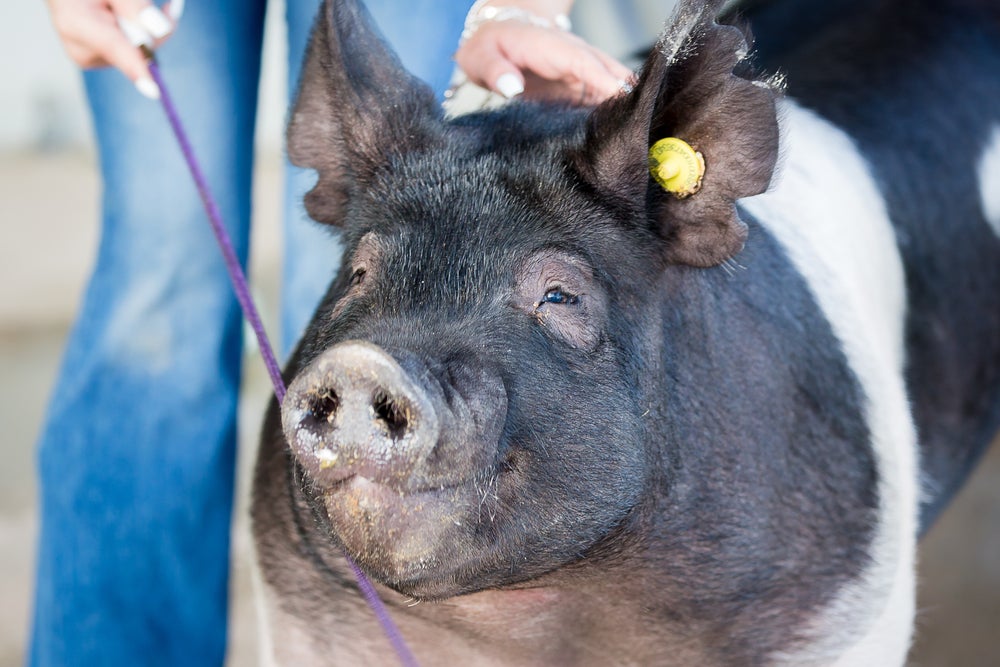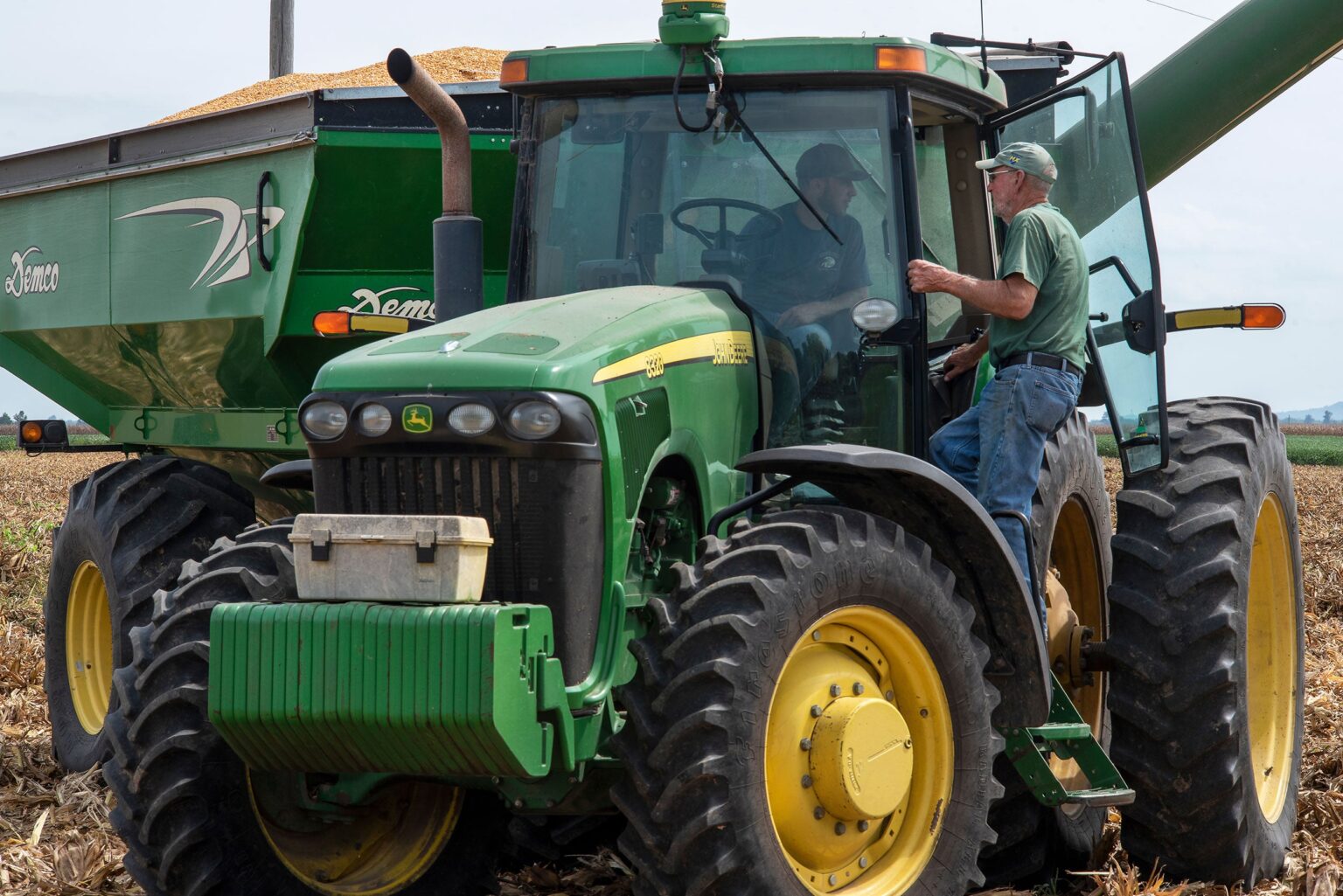Subscribe to Updates
Get the latest agriculture news and updates directly to your inbox.
Author: staff
By Cami Koons A survey of the commercial horticulture food crops industry in Iowa showed direct specialty crop sales of more than $79 million in 2022 and even higher figures of economic output attributable to the industry. Iowa Department of Agriculture and Land Stewardship announced the results of the 2023 survey Wednesday and said it shows the local produce industry is “diverse, growing, and making a significant contribution to Iowa’s economy and agricultural identity.” The survey was sent to Iowa specialty crop producers who grow edible crops like vegetables, fruits, berries, nuts, honey, maple syrup, herbs, mushrooms and pumpkins. According…
Oklahoma Farm Bureau’s Beef for Backpacks and Pork for Packs program brings together several organizations from across the state, including the Oklahoma Farm Bureau Foundation, FFA, and the state’s two main food banks, to provide protein to more than 35,000 chronically hungry children each week. Much of the meat for the protein sticks distributed in the kids’ backpacks comes from FFA members who donate their show cattle and hogs at the end of the spring and fall show seasons. Oklahoma Farm Bureau coordinates the animal collection and care at the state’s two largest youth livestock events: the Oklahoma Youth Expo,…
By Carl Zulauf This article extends the Oct. 2, 2025 farmdoc daily on corn and soybean storage cost by evaluating net returns to storing U.S. corn and soybeans since 1973. Cash storage after June is generally not profitable, as corn and soybean prices decline on average and in a majority of years. Net return to cash and futures hedged storage ending no later than June does not differ statistically from $0, implying returns just cover total storage cost. This finding nevertheless is consistent with building on-farm storage because on-farm storage provides other opportunities to improve farm profits, such as faster harvest, thus less harvest loss, and…
Tyson Foods and Cargill have agreed to pay a combined $87.5 million to settle a federal class-action lawsuit accusing them of inflating U.S. beef prices by restricting supply. The settlement, filed in the U.S. District Court for the District of Minnesota before Judge John Tunheim, marks the largest payout to date in the seven-year price-fixing litigation, surpassing Smithfield Foods’ $75 million agreement reached in late 2022. The proposed settlements are the first consumer agreements in the beef price-fixing case that began in 2019 and still require judicial approval, according to Reuters. Under the deal, Tyson will contribute $55 million and…
DAILY Bites Researchers say the U.S.-China trade war erased $14 billion in exports and permanently shifted buyers toward competitors like Brazil and Australia. Brazil’s massive productivity and infrastructure gains have made it the world’s top soybean exporter, while U.S. exports have stagnated. The report urges stronger trade diplomacy, renewed R&D investment, and upgraded logistics to restore America’s global agricultural edge. DAILY Discussion The United States has long been the world’s agricultural heavyweight, reliably posting trade surpluses driven by corn, soybeans, wheat, and cotton. That era may be fading, according to new research out of land-grant schools in Illinois and Texas.…
At the market close, December corn was up 2¼¢ at $4.22 per bushel. November soybeans were up 7½¢ at $10.29½ per bushel. “Renewed buying interest supported all commodities early on, as managed money showed interest in several markets,” said Karl Setzer, partner with Consus Ag Consulting. “This was most noticed in the gold market, where futures blew through the $4,000 level for the first time and are now closing in on $4,100. Safe-haven buying is one reason for this, but so is a growing disconnect in the market with the U.S. dollar in favor of crypto markets.” December CBOT wheat…
Across the country, agricultural educators are shaping the future of farming, food systems, and leadership, and insurance company Nationwide is again honoring that impact through its Golden Owl Award. Since its inception in 2018, the Golden Owl Award has supplied more than $600,000 to support teachers, students, school agricultural programs and FFA organizations. Last year, there were over 4,600 nominations across 13 participating states, and the program recognized 96 exceptional ag teachers including 13 “Ag Educators of the Year.” Now, the Golden Owl Award is expanding to two new states: Delaware and Utah, due to its positive impact and popularity.…
A new tool from Growmark aims to help farmers get an earlier read on corn yield potential — and see how close those early predictions come to harvest results. In 2025, the myFS Agronomy platform analyzed data from nearly 5 million acres across the Midwest, using aerial and satellite imagery to estimate county-level yields. The estimates ranged from about 255 bushels per acre in central Iowa to around 190 in southern Illinois, reflecting the season’s regional differences. Checking Field Performance Before Harvest At the farm level, the tool has been within 5% accuracy on yield predictions made in late July…
1. Grains, Soybeans Little Changed in Overnight Trading Grain and soybean futures were again little changed overnight, as the ongoing government shutdown and concerns about the lack of purchases from China keep investors on the sidelines. The government shutdown is now in its seventh day, leaving market watchers without weekly reports such as crop progress, export sales, and the Commodity Futures Trading Commission’s commitment of traders. The World Agricultural Supply and Demand Estimates report from the USDA is scheduled for release tomorrow but likely will be postponed or canceled. Also keeping traders sidelined is uncertainty on whether China will resume…
I love cattle and livestock conferences — both the educational sessions and the “hall talk,” if you will. Often, they serve as reunions for past college friends and peers in the livestock industry, as well as vacations for busy ranchers who generally don’t have a lot of time for standard island getaways. Anecdotally, though, it seems most conference attendees these days are Baby Boomers or Generation X (those born, collectively, between 1946 and 1980). And while they may represent an outsized share of the attendees, it’s likely that means there is a younger generation from the family farm or ranch…


:max_bytes(150000):strip_icc()/54778662706_5ab262825b_o-68d3addad1aa4d36911c1d80274538a9.jpg)
:max_bytes(150000):strip_icc()/Lee-Lubbers-washing-equipment-in-the-farm-yard-IMG_2130-333a5a401e3048a8bcb1727d316d6ee0.jpg)
:max_bytes(150000):strip_icc()/8293232288_8da55cc72e_o-b324a9331b0a48b487dd867154d53c50.jpg)


:max_bytes(150000):strip_icc()/produce-2048x1359-1ed7856d78714899862f4ec58eb85fbd.jpg)

:max_bytes(150000):strip_icc()/20230714-erik-peterson-041_farm_grain_bin_silo-356cf2d9e7a144a888c46729e77b0a19.jpg)

:max_bytes(150000):strip_icc()/Markets-10-Corn-up-soybeans-up-10-cb941d614a82452abc6768a865877543.jpeg)

:max_bytes(150000):strip_icc()/GettyImages-463245219-57630a5e3df78c98dc63106e.jpg)
:max_bytes(150000):strip_icc()/Updated3BigThings-2-wheat-green-red-4-7bb426e3d5204d84a31e5be77a0efc94.jpeg)
